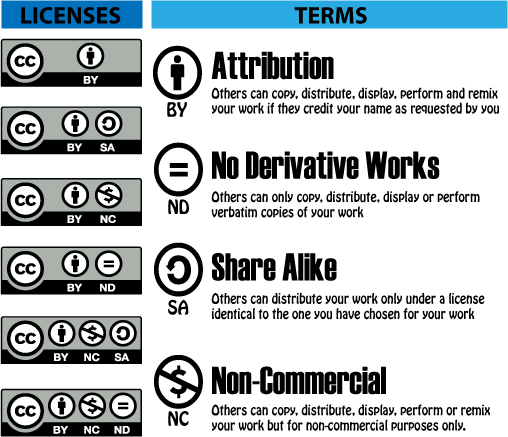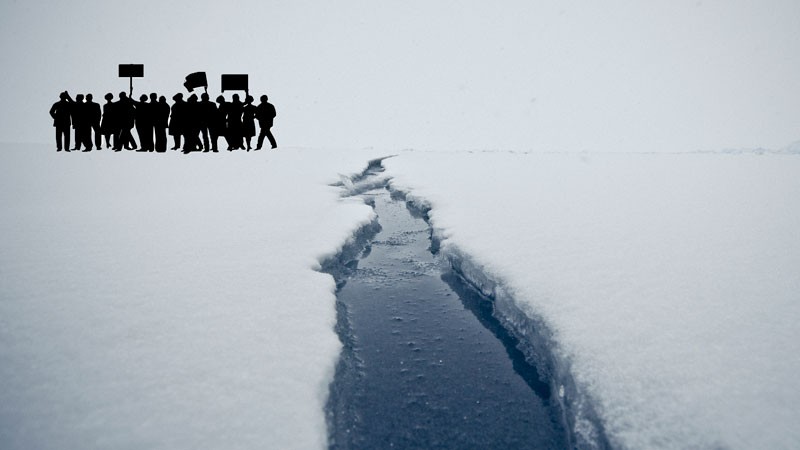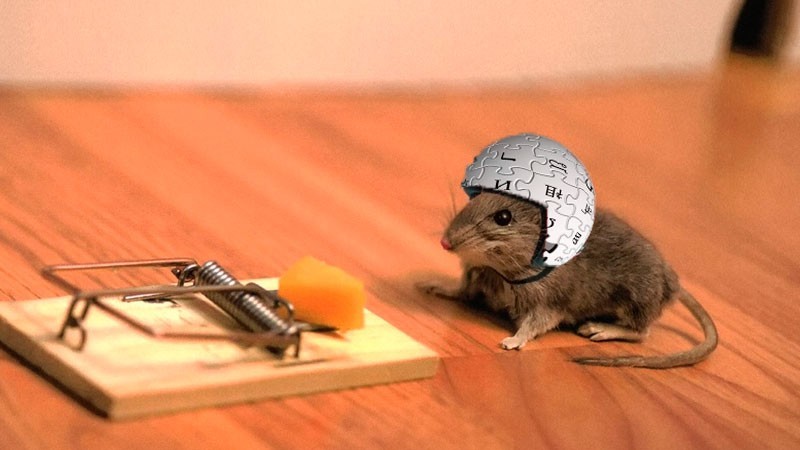
Photo by Flickr user Greh Fox. CC BY-NC 2.0
All GV stories should have a big, beautiful image at the top. A well-chosen image can set the tone of a story and help hook readers.
But finding related images that we have permission to use can be tricky. We must be mindful of copyright, which refers to the rights of the creator of an original piece of work, including the right to copy, distribute and adapt the work. We cannot use any image that is under standard copyright, unless we have the explicit permission of image's owner.
Any multimedia included in a story must be:
- clearly credited to the original creator
- indicate that it is used with permission
- link back to the original
Editors have to check all the images that authors use, so please ensure all copyright questions are answered before submitting any posts.
So where can we find images that we have permission to use?
Contents
Creative Commons
Creative Commons (CC) is a nonprofit organization that creates legal and technical infrastructure to maximize creativity, sharing, and innovation. Its license system has been adopted by many multimedia- and photo-sharing sites. The organization's website offers all-in-one access to a variety of image search engines at ccsearch.creativecommons.org/ and search.creativecommons.org. You can also search for Creative Commons-licensed material on the individual image hosting websites, such as:
- CC Search
- Flickr
- Wikimedia Commons
- Google Images
- Pixabay
- Unsplash
- Pexels
- The Noun Project
- Deviant Art
- Pure PNG
Don't forget to sort your results so that only Creative Commons-licensed images appear. In Google image search, you can do this by selecting Tools > Usage rights > Labeled for reuse.
For a nonprofit like Global Voices, this content is often freely available for non-commercial use. It is important to make sure that the license of an image allows for reuse, and to indicate this in the image caption.
Here's an example of how we do this, with a lovely photograph by GV author Subha:

Sunset at Chandipur Sea, Baleswar, India. Photo by Subhashish Panigrahi via Flickr (CC BY-NC 2.0)
The attribution has three components:
- Credit for the photographer or artist (Subhashish Panigrahi)
- Indication of where the image was obtained (Flickr) and a link to that original source
- The license that the photographer or artist has selected for the image (CC BY-NC 2.)
The first two parts are pretty easy to find on Flickr, Wikimedia and elsewhere. The last part is a bit trickier. In this particular case, these letters stand for “Creative Commons Attribution Non-Commercial Version 2.0″. This refers to a specific license offered by Creative Commons, that anyone can use for their images or other creative works.
Creative Commons has a variety of licenses that set certain limitations to how a creative work can be reused. Each license has its own symbols and abbreviation, which sites like Wikimedia and Flickr make it easy to find. Here's a quick explanation of the different licenses and the abbreviations you can use to denote them:

Creative Commons license suite by Creative Commons. (CC-BY-NC-SA)
Public Domain
Images in the public domain are free to use. Many governments or intergovernmental organizations such as the United States government or the United Nations also license their images freely as “public domain”. After a certain period of time in most countries, images become freely available to the public domain. Check the specific image’s copyright to be certain.
In addition to government and intergovernmental organizations, you can search for public domain images and illustrations at:
Screenshots
We can use screenshots of videos as long as we credit and link back to the original source. For example:
Screenshot from video ‘Libyan Citizen Reporters’ uploaded on 12 March, 2011, by YouTube user jamil.
Make sure to crop out the video status bar and other features of the video player.
AI-Generated Images
As artificial intelligence technology becomes more and more common, some of our writers have expressed interest in experimenting with AI-generated images. We leave the decision whether to use man-made or AI images up to the writer, as long as the work is completely free to use and notice is given that the work is generated through AI. For further information on AI art, the ethical questions some people are raising, and the ongoing debate, see the following resources: The New Stack, Wired, MUO, ITTS, and Data Ethics.
Copyright Exceptions
Book covers, movie posters, logos and advertisements can often be used without permission when the post discusses them because they are designed to be distributed widely and it can count as a fair use “citation.”
Some countries like China or Iran have never signed international copyright treaties and it can be OK to reuse images from state media to help illustrate a story. In all cases, the original source and photographer or creator should still be identified whenever possible.
Social Media Photos
Just because an image is posted on a social network does not mean it stops being protected by the creator's copyright. In most cases, we need to ask permission to use the image as well as credit the creator.
Important: We cannot use an image posted on social media sites that is not the property of the social media user who published it and is actually a reproduction of copyrighted content. Remember to make sure the image is original.
There are certain exceptions to this rule. In some cases, the original photographer may not want to be identified if there is a free speech issue and it might be clear from context that the person intends for the photo to be widely distributed without identification.
Certain social networking photo-sharing services like Twitter or Instagram have in their terms and conditions that the photos are intended for sharing within the context of their site and offer an embed code we can use in our stories.
It's always a bit tricky to decide, so feel free to discuss with your editor if in doubt.
Requesting Special Permission
If the multimedia content you wish to use in your story is not Creative Commons-licensed or from a service to which Global Voices has access, you should first request permission from the owner. Use the email template below to do so:
Dear […],
I am a volunteer contributor for Global Voices, a website that reports on compelling and important online conversations coming from marginalized and misrepresented communities around the world. The organisation brings together more than 800 authors and translators, emphasizing voices that are not normally heard in international mainstream media.
Global Voices often includes multimedia within its feature posts and I would love to feature your photo of […] in an article I am writing for the site about […].
May I have your permission to do so? I will of course include full credit to you and link to the original source.
I am looking forward to hearing from you.
Best regards, […] Global Voices Author www.globalvoicesonline.org
Remixing
We can remix two or more images together using editing software in order to create a new image that offers commentary on a certain situation. The resulting “transformative” image is free for us to use.
How we attribute the image depends on the extent to which you think the image was transformed. Take, for example, this set of images remixed by RuNet Echo editor Kevin Rothrock and featured in his story Did Wikipedia Just Outsmart Russia's Internet Blacklist?:
Kevin felt the resulting edited image was indeed something transformative and very different from the original unmixed images, and so didn't link to the original photographs.
In Russian Censors Falsify Evidence Against Newspaper to Uphold Ban on Political Coverage, however, Kevin felt his edits to the original Creative Commons-licensed image were insignificant, so he mentioned the original photographer's name:

Marco Fieber's Olkhon Island, Siberia, photograph, February 25, 2013, edited by Kevin Rothrock. CC 2.0.

